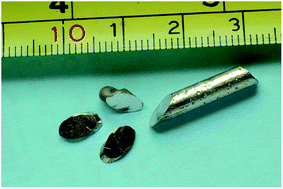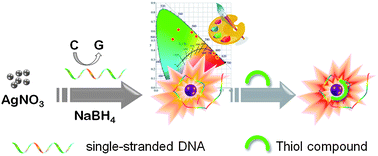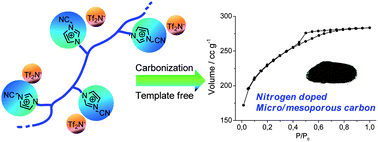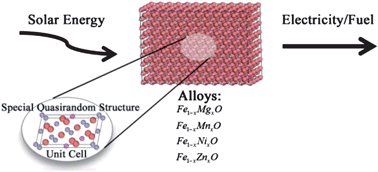This month sees the following Journal of Materials Chemistry B articles that are in the top ten most accessed from April – June:
Recent advancements of graphene in biomedicine
Huacheng Zhang, George Grüner and Yanli Zhao
J. Mater. Chem. B, 2013,1, 2542-2567
DOI: 10.1039/C3TB20405G
Redox active gels: synthesis, structures and applications
Xiaofeng Sui, Xueling Feng, Mark A. Hempenius and G. Julius Vancso
J. Mater. Chem. B, 2013,1, 1658-1672
DOI: 10.1039/C3TB00209H
Carbon “quantum” dots for optical bioimaging
Pengju G. Luo, Sushant Sahu, Sheng-Tao Yang, Sumit K. Sonkar, Jinping Wang, Haifang Wang, Gregory E. LeCroy, Li Cao and Ya-Ping Sun
J. Mater. Chem. B, 2013,1, 2116-2127
DOI: 10.1039/C3TB00018D
Functionalized-chitosan/quantum dot nano-hybrids for nanomedicine applications: towards biolabeling and biosorbing phosphate metabolites
Herman S. Mansur, Alexandra A. P. Mansur, Elisabete Curti and Mauro V. De Almeida
J. Mater. Chem. B, 2013,1, 1696-1711
DOI: 10.1039/C3TB00498H
One-step preparation of nitrogen-doped graphene quantum dots from oxidized debris of graphene oxide
Chaofan Hu, Yingliang Liu, Yunhua Yang, Jianghu Cui, Zirong Huang, Yaling Wang, Lufeng Yang, Haibo Wang, Yong Xiao and Jianhua Rong
J. Mater. Chem. B, 2013,1, 39-42
DOI: 10.1039/C2TB00189F
Nanoporous microspheres: from controllable synthesis to healthcare applications
Jun-Bing Fan, Chao Huang, Lei Jiang and Shutao Wang
J. Mater. Chem. B, 2013,1, 2222-2235
DOI: 10.1039/C3TB00021D
Luminescent S-doped carbon dots: an emergent architecture for multimodal applications
Sourov Chandra, Prasun Patra, Shaheen H. Pathan, Shuvrodeb Roy, Shouvik Mitra, Animesh Layek, Radhaballabh Bhar, Panchanan Pramanik and Arunava Goswami
J. Mater. Chem. B, 2013,1, 2375-2382
DOI: 10.1039/C3TB00583F
Multifunctional core–shell upconversion nanoparticles for targeted tumor cells induced by near-infrared light
Xiaojun Yang, Qianqian Xiao, Caixia Niu, Nan Jin, Jin Ouyang, Xueyuan Xiao and Dacheng He
J. Mater. Chem. B, 2013,1, 2757-2763
DOI: 10.1039/C3TB00575E
Biopolymer functionalized reduced graphene oxide with enhanced biocompatibility via mussel inspired coatings/anchors
Chong Cheng, Shengqiang Nie, Shuang Li, Hong Peng, Hang Yang, Lang Ma, Shudong Sun and Changsheng Zhao
J. Mater. Chem. B, 2013,1, 265-275
DOI: 10.1039/C2TB00025C
Core–shell designs of photoluminescent nanodiamonds with porous silica coatings for bioimaging and drug delivery I: fabrication
Eva von Haartman, Hua Jiang, Andrei A. Khomich, Jixi Zhang, Sergey A. Burikov, Tatiana A. Dolenko, Janne Ruokolainen, Hongchen Gu, Olga A. Shenderova, Igor I. Vlasov and Jessica M. Rosenholm
J. Mater. Chem. B, 2013,1, 2358-2366
DOI: 10.1039/C3TB20308E
Why not take a look at the articles today and blog your thoughts and comments below.
Fancy submitting an article to Journal of Materials Chemistry B? Then why not submit to us today!
Comments Off on Top 10 most-read Journal of Materials Chemistry B articles – Q2 2013


















